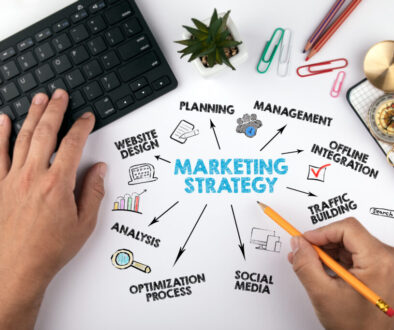You’re Probably Making one of These 4 Email Marketing Mistakes
Each email you send to your clients is a chance to make a sale. Unfortunately, each email you send is also a chance to get kicked out of your prospects’ inboxes forever. (That is why I only send the best content to my own email subscribers.)
I get a lot of marketing emails from sports facilities. I sign up for them to keep in touch with my clients, and to find best practices for this blog. Unfortunately, along with the great stuff, I see a lot of mistakes. I know that they’re mistakes because I’ve made them myself and learned from them.
If you own or manage a sports facility full-time, you’re probably not going to become an email marketing expert. That’s fine. But it’s not complicated to just keep a few of these guidelines in mind. Here are the simplest and easiest-to-fix mistakes that I see sports facilities regularly make when they send marketing emails.
Mistake 1: Not using lists.
When you have camp slots to fill and membership goals to hit, it’s tempting to blast your news to every single contact in your database. After all, if you really believe in your programming, you know it will help them. In addition, a lot of your contacts will be interested. Plus, it’s a lot easier to just send an email to everyone than it is to segment your lists and risk leaving some clients in the dark.
The problem is that your clients get a LOT of emails every day. If they decide that yours are taking up more space than they’re worth, they can easily unsubscribe, or, worse, hit the “spam” button. In either case, your emails won’t get to them again. You have to earn your spot in their inbox with useful, relevant content.
If your email is about a youth soccer league and your client’s kid plays football, the email is not useful to them. If your email is about programs for pre-schoolers and your clients’ kids are in high school, it’s not useful to them. I’ve even received emails about schedule changes for classes and teams that I was definitely not enrolled in. Although, eSoft Planner allows users to quickly contact all the clients enrolled in any particular class or team.
Sending to your whole list can be OK when you have general announcements (such as the facility closing for weather) or even several programs being announced at once. In general, try to target your emails as much as you can. I’ve noticed that on average, the open rate for my emails more than doubles when I use lists organized by client interest. (For more on how to select and manage client interests, check out the post I wrote about it.)
Mistake 2: Not paying attention to the subject line.
I get a lot of emails with subjects like “September Schedule” or “Fall Softball.”
If you’re sending your emails to very specific lists, these straightforward subjects might work just fine. But please consider this: If the subject line doesn’t cause your client to open the email, the content inside is worthless. So, you should spend some extra time getting it right.
Instead of “Fall Softball,” for example, what about “Fall Softball – One Week Left to Register” or “Coach Smith Invites You to Join the Fall Softball League”? Emphasizing limited time always helps spur action. Also, both subjects give the client more of an incentive to open the message.
If you have a large list and a professional email marketing program, you can even split test some of your subjects to see which ones get opened more. I’ve been trying this lately myself. I will definitely keep my subscribers posted on my progress.
Mistake #3: No “call to action.”
For most of my sports facility clients, the whole point of sending an email is to let their own clients know about new programs and offers. Too many emails leave out the most important part: the registration link!
Not including the registration link in the email creates extra work for your clients when they do want to sign up. It also hurts their chances of signing up at all. If you don’t have an web-based scheduling system (of course I’m biased toward my own) you should at least provide a very explicit next step. For example, “Call us at 555-5555 and ask for Mike.” You could even attach a PDF registration form so they can print it and fill it out at home.
Mistake #4: Not targeting the decision maker.
Most of the emails I get are targeted to athletes, even though the athletes are not typically the ones making the final purchasing decision.
This is something I’ve been thinking about recently in my own marketing. For my most recent email, I decided that since most of the email addresses in my lists are those of parents, I should be writing directly to them. I reworked my message to put the parents’ concerns first. I did see a small increase in the open and click rate. However, I have to do more research to see if it makes a big difference.
(If you have any thoughts on whether to speak more to the parents or the athletes, I’d love to hear them. Email me!)
In conclusion, most of these best practices for email come naturally if you’re truly empathizing with your clients. Think about the type of email you appreciate the most. It’s info that’s timely, relevant, easy to act on when you want to, and written as if it were sent to you personally. Make sure you’re giving your clients the same.



